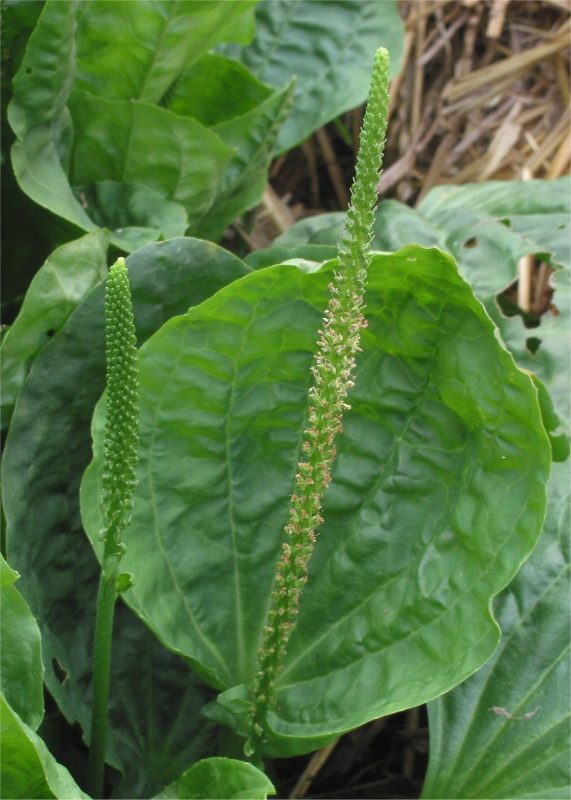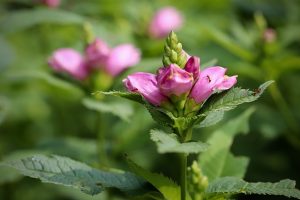Broadleaf plantain, scientifically known as Plantago major, is a versatile and hardy plant found in various environments around the world. Often regarded as a common weed, it offers numerous health benefits and culinary possibilities. Foragers and herbal enthusiasts appreciate its easy identification and the practicality of harvesting it. In this post, we will discuss how to identify, harvest, and use broadleaf plantain.
Identification of Broadleaf Plantain

Before you start foraging, it’s crucial to correctly identify broadleaf plantain. Here are some key characteristics to help you:
Leaves: The leaves of Plantago major are broad, oval-shaped, and can grow up to 10 inches long. They grow in a rosette formation close to the ground, with a prominent central vein and a smooth, slightly wavy margin.
Flowers: The flowering stalks are tall and slender, rising up to 12 inches above the leaves. They bear small, greenish-white flowers that bloom in spike-like clusters, usually appearing in late spring and continuing through summer.
Growing Environment: You can find broadleaf plantain in lawns, gardens, meadows, and disturbed soil. It thrives in a variety of conditions and is commonly seen in grassy areas.
Best Time to Harvest
The optimal time for harvesting broadleaf plantain is during the spring and early summer when the leaves are tender and flavorful. Younger leaves are preferable for culinary uses, while older leaves can become tough and bitter. You can start harvesting once the plant has established itself, typically when the leaves are around 4 to 6 inches long.
How to Harvest
Tools: You need minimal tools for harvesting broadleaf plantain. A pair of scissors or garden shears works well, but you can also use your hands.
Selecting Leaves: Look for fresh, unblemished leaves. Avoid any that show signs of discoloration or pests. The younger leaves are more desirable for salad or cooking.
Cutting the Leaves: Cut the leaves at the base, near the stem, taking care to leave some foliage behind so the plant can continue to thrive.
Harvesting Flowers and Seeds: If you’re interested in the flowers, you can also cut those for use in teas or decoration. Seed heads can be collected once they turn brown for later use.
Cleaning: Once harvested, rinse the leaves under cool water to remove any dirt or insects. Pat them dry with a clean cloth.
Uses for Broadleaf Plantain
Broadleaf plantain is not only edible but also valued for its medicinal properties. Here are some popular uses:
Culinary Uses
Salads: Young leaves can be used raw in salads for a nutritious addition with a mild flavor.
Cooking: Sauté or steam the leaves as you would spinach. Older leaves can be made into pesto or added to soups.
Tea: The leaves can be dried and steeped to make a soothing herbal tea.
Medicinal Uses
Broadleaf plantain has a long history in traditional medicine. It is known for:
Wound Healing: The leaves can be applied directly to cuts and insect bites for their anti-inflammatory and antimicrobial properties.
Respiratory Health: Steeping the leaves in tea can help with coughs and other respiratory issues.
Digestive Aid: The plant is often used to soothe digestive problems and support gut health.
Foraging Tips
Sustainability: Only harvest what you need, and avoid overharvesting to ensure the continued growth of the plant.
Avoid Contaminated Areas: Make sure to forage in areas free from pesticides, chemicals, and pollution, like your own garden or organic farms.
Know Your Surroundings: Familiarize yourself with other plants in the area to avoid confusion and ensure you are harvesting the right species.
Conclusion
Harvesting broadleaf plantain can be a rewarding experience for both seasoned foragers and newcomers alike. With its bounty of culinary uses and medicinal benefits, this common plant should not be overlooked. Whether you’re adding it to your meals or using it for natural remedies, broadleaf plantain is a powerful ally in your kitchen and herbal cabinet.





